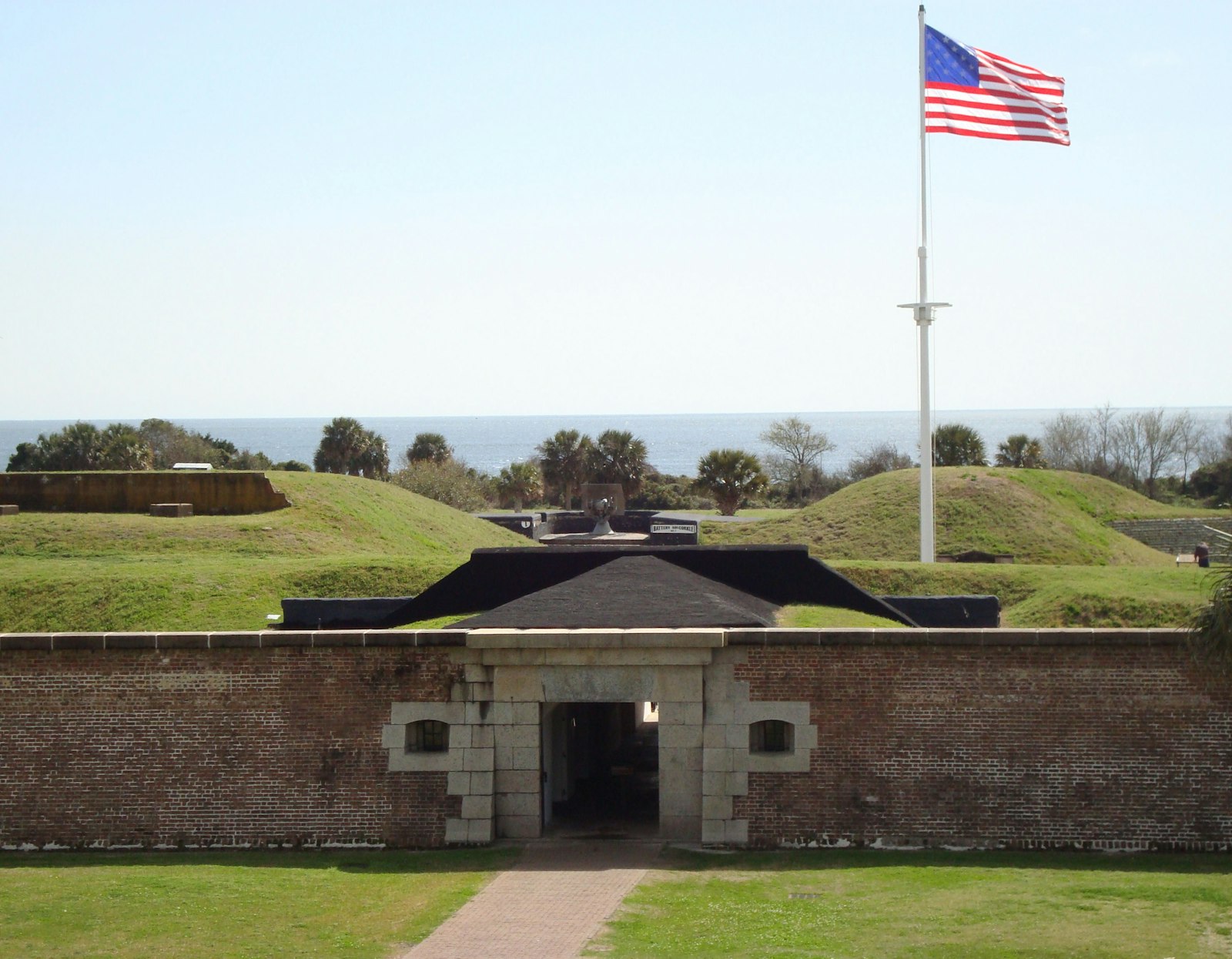
Fort Sumter and Fort Moultrie National Historical Park
The city of Charleston played a key role both in the American Revolution and the American Civil War. This unique national park incorporates several sites around Charleston Harbor that help share the unique stories of the places and people that shaped our history.
Sullivan’s Island has long served as Charleston Harbor’s first line of defense. Quarantine stations, constructed to prevent the spread of disease, checked every person that came into the harbor, including Africans who were enslaved, and formal fortifications sought to defend against foreign invasion. Fort Moultrie, the first fort on Sullivan’s Island, was attacked in June 1776 by the Royal Navy while the fort was still incomplete and managed to drive out the British forces after nine hours of battle. Another fort was built in its place after the British captured Charleston in 1780, and a third brick Fort Moultrie was completed by 1809 after the second had suffered from neglect and a destructive hurricane. Fort Moultrie, named in honor of the commander who fought off the Royal Navy in 1776, was modernized throughout the latter half of the 19th century and beginning of the 20th century and today the fort has been restored to portray the major periods of its complex history, from the Palmetto-log fort of 1776 to the World War II Harbor Entrance Control Post.
The nearby Fort Sumter was constructed on a man-made island as part of the Third System of Seacoast Defense – a network of forts meant to strengthen maritime defenses after the War of 1812. On April 21, 1861, following a chain reaction of social, economic, and political events, the first shots of the Civil War were fired at Fort Sumter. The Confederates garrisoned Fort Sumter for almost four years as the fort became the focus of a long defense. The Siege of Charleston continued until February 17, 1865 – the longest siege in U.S. military history – and left the former three-tiered brick and masonry fort effectively a pile of rubble. Today the fort is accessible by boat, and visitors can enjoy ranger talks and wayside exhibits that explore the fort’s history and significance. Visitors to Charleston can also enjoy picnicking and casual recreational activities in outside the Fort Sumter Visitor Education Center, located in Charleston’s Liberty Square.
Park Updates
-
UpdateNPF Invests in Park Partner Organizations to Further Capacity-Building Goals